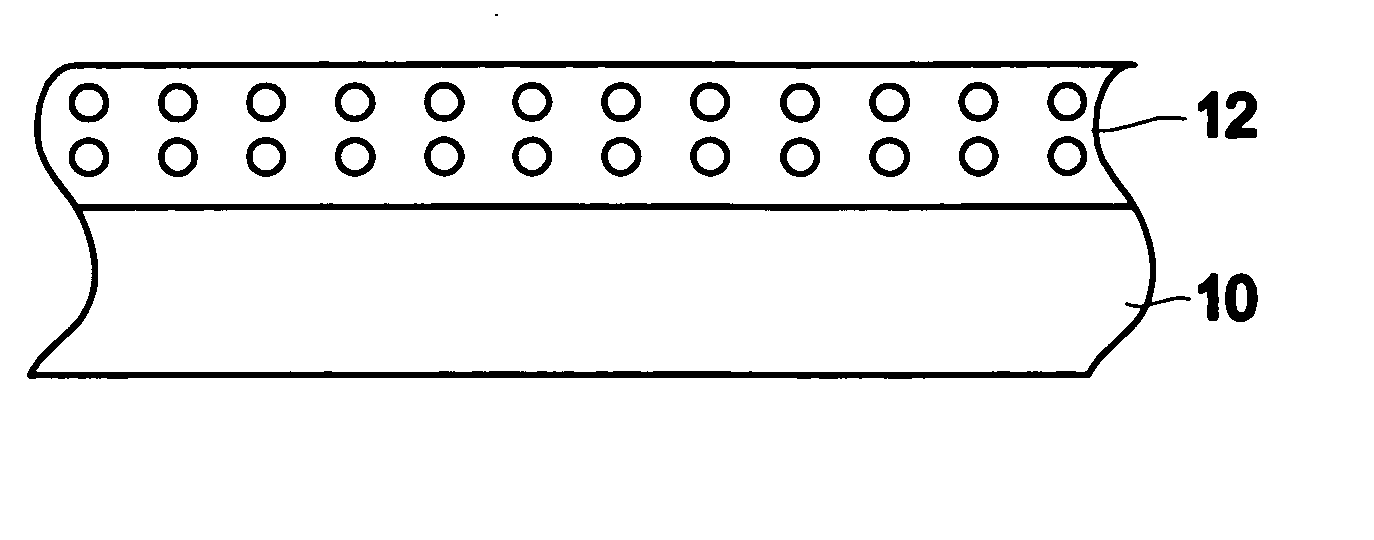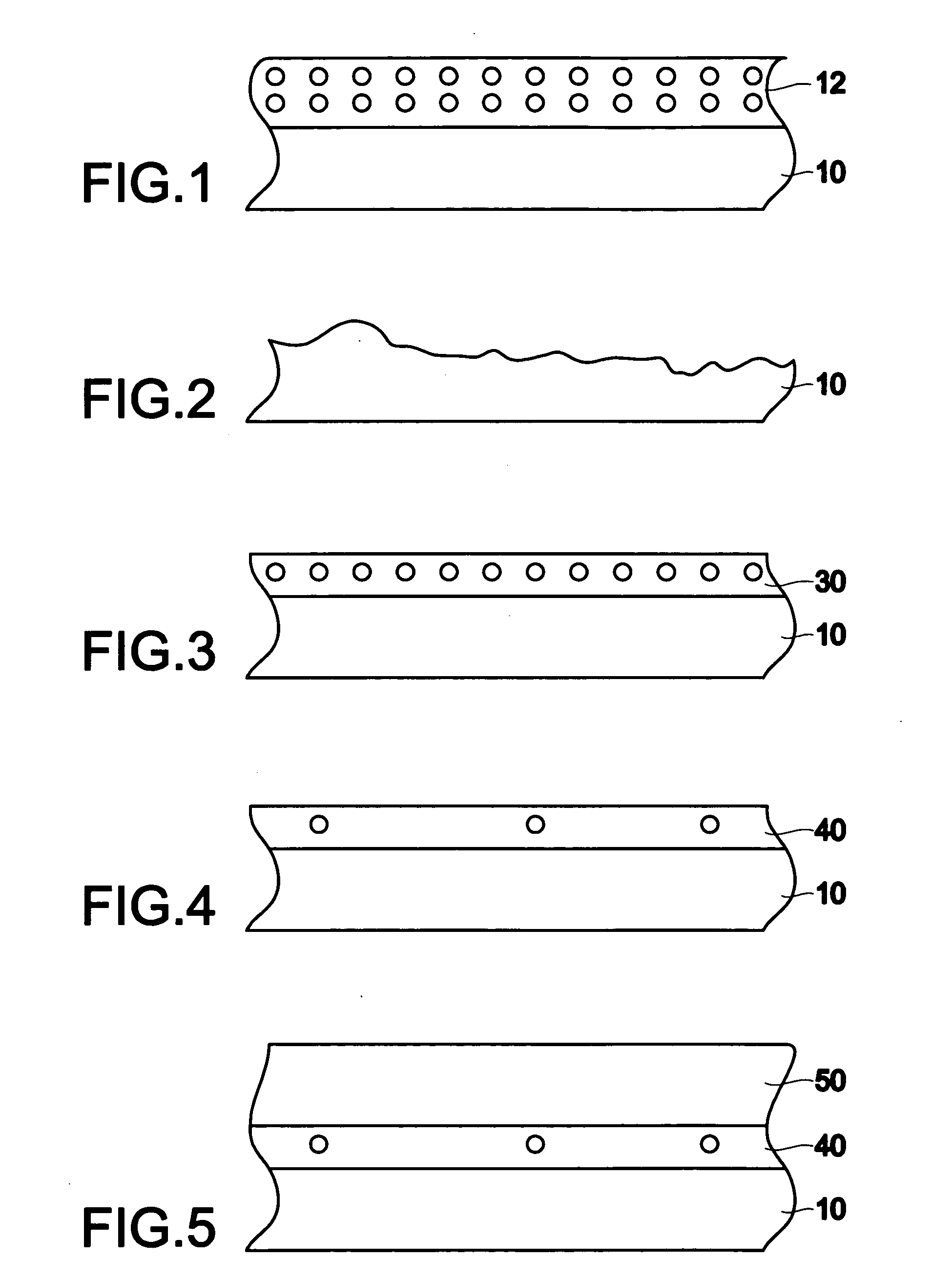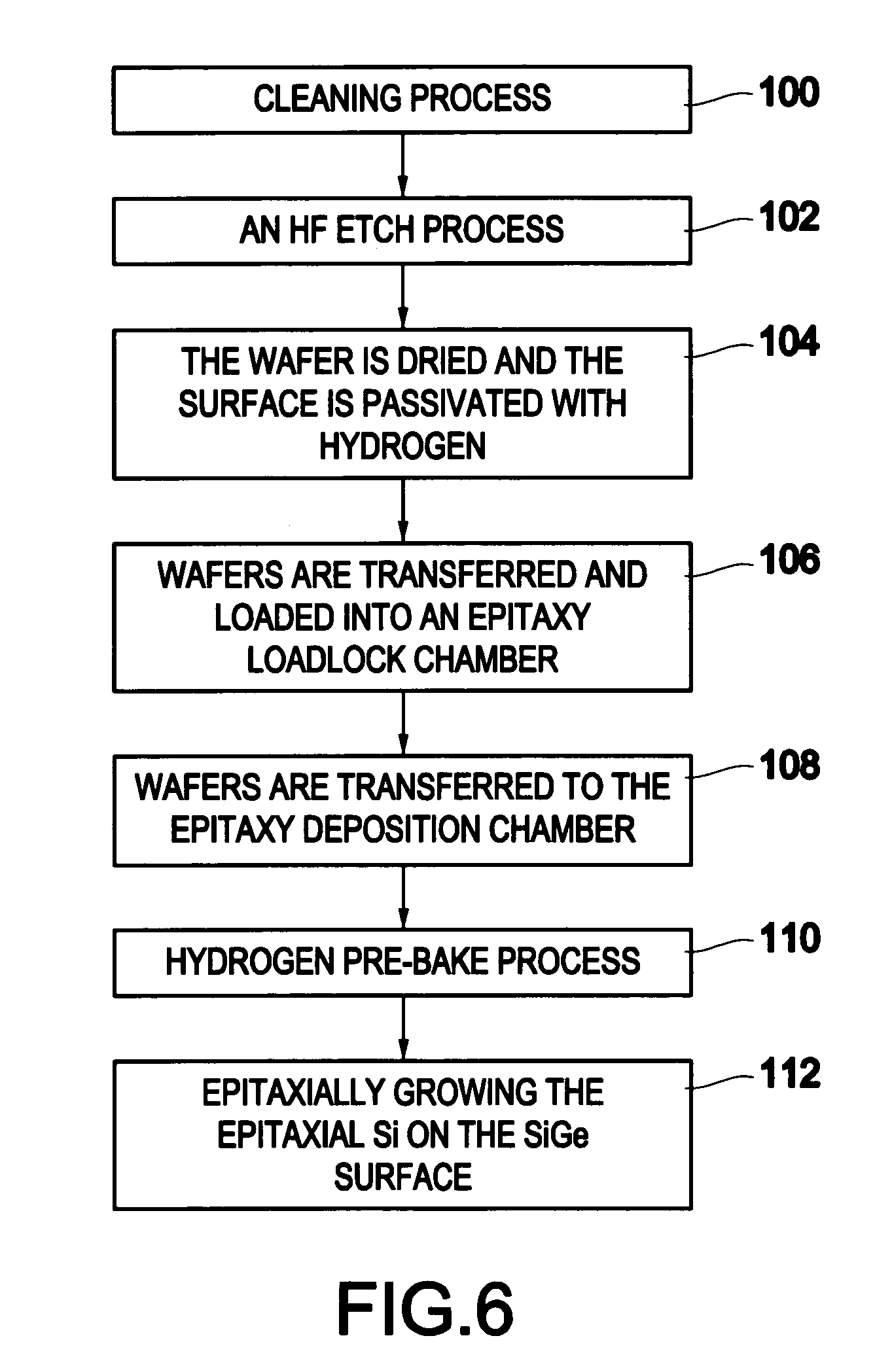Method of preventing surface roughening during hydrogen pre-bake of SiGe substrates using chlorine containing gases
a hydrogen pre-bake and sige substrate technology, applied in the direction of single crystal growth, polycrystalline material growth, chemistry apparatus and processes, etc., can solve the problems that the oxygen at the interface may affect the operation or performance of the device, and achieve the effect of avoiding roughening the sige surfa
- Summary
- Abstract
- Description
- Claims
- Application Information
AI Technical Summary
Benefits of technology
Problems solved by technology
Method used
Image
Examples
example 1
[0031]
H2 8 slmDCS 50 sccmHCl 65 sccmPressure 10 TorrTemperature825° C.Time120 secEtch rate 0 Å / sec
example 2
[0032]
H2 8 slmDCS 50 sccmHCl 100 sccmPressure 10 TorrTemperature 825° C.Time 120 secEtch rate 0.3 Å / sec
example 3
[0033]
H2 8 slmDCS 50 sccmHCl 50 sccmPressure 10 TorrTemperature 825° C.Time 120 secDeposition rate 0.4 Å / sec
[0034] Thus, the invention provides a process that combines an HF etch and chlorine containing environment hydrogen pre-bake. The HF etch removes most of oxygen at the surface. Then, this is followed with the chlorine containing environment hydrogen pre-bake, to remove the remaining oxygen. This is used successfully to keep the surface from roughening, while still removing all oxygen from the SiGe surface.
[0035] While only Si epitaxy on SiGe surface is discussed above, the invention is useful when epitaxially growing Si or SiGe on: SiGe (including SiGe on bulk substrate and SiGe on insulator), patterned strained Si (including patterned strained Si on bulk substrate and on insulator), or patterned thin SOI (such as patterned SOI with Si thickness less than 300 Å) surfaces, and avoids creating a rough surface upon which the epitaxial layer is grown.
[0036] The invention add...
PUM
 Login to View More
Login to View More Abstract
Description
Claims
Application Information
 Login to View More
Login to View More - R&D
- Intellectual Property
- Life Sciences
- Materials
- Tech Scout
- Unparalleled Data Quality
- Higher Quality Content
- 60% Fewer Hallucinations
Browse by: Latest US Patents, China's latest patents, Technical Efficacy Thesaurus, Application Domain, Technology Topic, Popular Technical Reports.
© 2025 PatSnap. All rights reserved.Legal|Privacy policy|Modern Slavery Act Transparency Statement|Sitemap|About US| Contact US: help@patsnap.com



